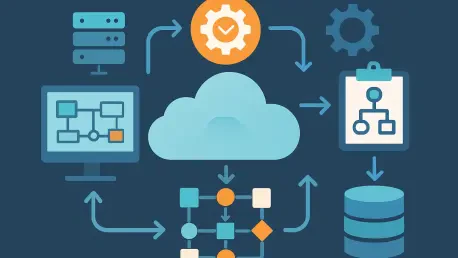I’m thrilled to sit down with Vijay Raina, a renowned expert in enterprise SaaS technology and software architecture. With years of experience in workflow orchestration and a deep understanding of tools like Spring AI and Dapr Workflows, Vijay has been at the forefront of designing resilient and scalable systems for modern enterprises. Today, we’ll dive into the fascinating world of long-running durable agents, exploring how these technologies enhance predictability, reliability, and scalability in agentic systems.
How do you distinguish between workflows and agents in the context of agentic systems, and why does this matter?
In agentic systems, workflows and agents represent two different approaches to orchestration. Workflows are essentially predefined paths where large language models (LLMs) and tools follow a structured, prescriptive process coded by developers. Think of them as a blueprint for tasks that need consistency. Agents, on the other hand, are more dynamic—LLMs decide their own paths and tool usage on the fly. This distinction matters because it impacts how we design systems for specific needs. Workflows give us control and repeatability, which are often critical in enterprise settings, while agents offer flexibility but can be harder to predict.
Why do workflows tend to offer better predictability and consistency compared to fully autonomous agents?
Workflows are inherently designed with structure in mind. Since the steps are predefined, you know exactly what to expect at each stage, making outcomes more predictable. Autonomous agents, while powerful in adapting to new situations, can introduce variability because their decision-making isn’t constrained by a fixed path. For well-defined tasks—especially in enterprise environments where consistency is non-negotiable—workflows reduce the risk of unexpected behavior and ensure that processes align with business rules and expectations.
How do workflows align with enterprise needs like reliability and maintainability?
Enterprises prioritize systems that don’t fail unexpectedly and are easy to manage over time. Workflows support reliability by providing a clear sequence of operations, so if something goes wrong, it’s easier to pinpoint the issue and fix it without disrupting the entire system. Maintainability comes from the fact that workflows are coded explicitly—teams can update or modify steps without unraveling complex, dynamic logic. This structured approach fits perfectly with enterprise demands for systems that can be audited, scaled, and supported long-term.
Can you walk us through the key agentic patterns used in Spring AI for orchestrating LLMs and tools?
Certainly. Spring AI highlights five main patterns for orchestration. First, there’s the Chain Workflow, which breaks complex tasks into smaller, sequential steps. Then, the Parallelization Workflow allows multiple tasks to run simultaneously, with variations like sectioning for independent subtasks and voting for consensus. The Routing Workflow intelligently directs tasks based on input types. The Orchestrator/Workers pattern uses a central LLM to manage subtasks handled by specialized workers. Finally, the Evaluator-Optimizer pattern involves two LLMs—one generating content and the other refining it through feedback loops. Each pattern addresses specific challenges in managing LLM interactions effectively.
Let’s dive into the Chain Workflow pattern. How does it simplify complex tasks?
The Chain Workflow pattern is all about decomposition. It takes a big, unwieldy task and splits it into smaller, manageable pieces that are executed in a specific order. For example, if you’re generating a detailed report, the workflow might start with data collection, move to analysis, and end with formatting the output. Each step is handled sequentially, ensuring that dependencies are respected and the process remains clear. This approach reduces errors and makes debugging easier since you can isolate issues to a specific stage.
What are the benefits of using Dapr Workflows for implementing these agentic patterns over traditional Java constructs?
Dapr Workflows bring a lot to the table compared to plain Java constructs. They provide durable execution, meaning that if your application crashes, the workflow can pick up right where it left off without redoing completed steps. This saves time and resources. Additionally, Dapr allows scalability across multiple JVMs or even different applications, which plain Java struggles with since it’s often tied to a single instance. You also get built-in observability and fault tolerance, making it easier to monitor and maintain complex orchestrations in production environments.
How does durable execution in Dapr Workflows contribute to saving time and resources when failures occur?
Durable execution is a game-changer for handling failures. In a typical Java setup, if your app crashes midway through a process, you often have to restart from scratch, wasting time and computing resources. Dapr Workflows track the state of each task, so when a failure happens, the system remembers what’s been done and resumes from the last checkpoint. This means you’re not reprocessing tasks unnecessarily, which cuts down on costs—especially with resource-intensive LLM calls—and keeps turnaround times short.
Can you explain how Dapr Workflows ensure a process continues after an application crash?
Dapr Workflows use an orchestrator that monitors task execution and maintains state outside the application itself. When you define tasks using something like the WorkflowActivity interface, each step’s progress is logged. If the application crashes, the orchestrator retains this state. Once the app restarts, Dapr checks the last completed step and continues from there, rather than starting over. It’s like having a persistent memory of your workflow’s journey, ensuring no work is lost or duplicated due to unexpected interruptions.
How does the ability to scale across multiple JVMs or applications with Dapr Workflows enhance system performance?
Scaling with Dapr Workflows is a significant advantage. Unlike a single JVM setup where resources are limited to one instance, Dapr allows you to distribute workflow activities across multiple JVMs or even separate applications. This means you can handle a much larger volume of tasks in parallel, truly leveraging the power of distributed systems. For example, if you’re processing thousands of prompts, different instances can tackle portions simultaneously, speeding up execution and improving throughput without overloading a single machine.
What’s your forecast for the future of workflow orchestration in enterprise systems?
I believe workflow orchestration will become even more central to enterprise systems as businesses increasingly adopt AI-driven processes. Tools like Dapr Workflows and Spring AI are just the beginning—we’ll see tighter integration with cloud-native architectures and more advanced patterns for balancing autonomy and control. I expect a surge in demand for frameworks that offer durability and scalability out of the box, as enterprises aim to build systems that can handle massive, complex workloads while staying resilient. The focus will likely shift toward making these tools more accessible, so even non-specialists can design and deploy robust workflows.









